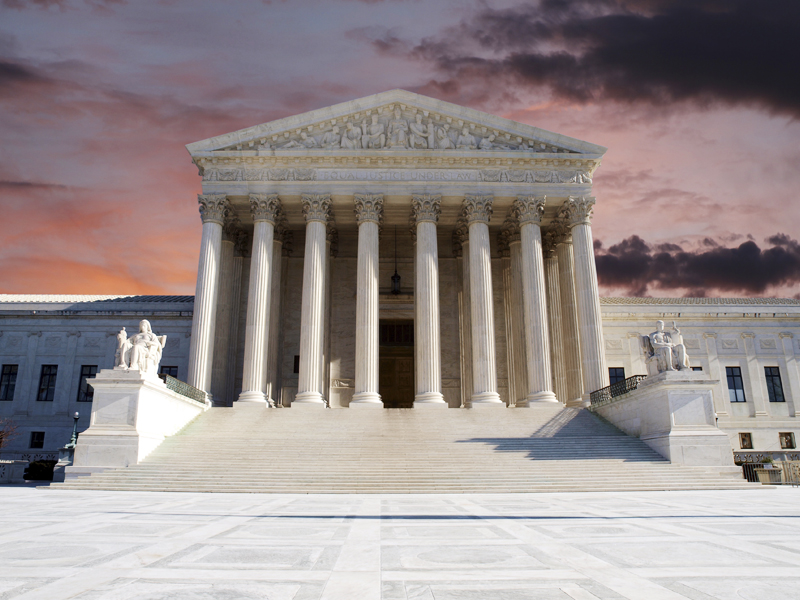
Photo by JJFarquitectos on iStock
Authors
-
Lizzie Russler
Former Associate, Climate Change, BSR
-

Associate Director, Climate and Nature, BSR
-
Melissa Do
Former Manager, Climate Change, BSR
-

Director, Climate and Nature, BSR
Key Points
- While business leaders are starting to consider how climate change disproportionately affects people and communities, there are few examples of how the private sector is working with affected stakeholders.
- Co-creation, in the context of climate justice, centers affected communities in identifying challenges, developing solutions to address systemic injustices and advancing equitable social, and environmental outcomes.
- BSR’s Climate team has published an Issue Brief which equips business practitioners with a foundational understanding of co-creation, specifically what it is, why it’s important, and how companies can integrate this approach to address climate change.
While business leaders are starting to consider how climate change disproportionately affects people and communities, there are few examples of how the private sector is working with affected stakeholders. In fact, at a BSR hosted “Roundtable Discussion on Climate Justice and Authentic Collaboration”, 70 percent of business participants indicated that they need support in understanding how to approach climate justice.
By incorporating a co-creation process, business leaders can center communities most affected by climate change in ongoing discussions as they experience the injustice firsthand and can identify solutions that best fit their needs. Thoughtful and intentional co-creation facilitates conscious inclusion of those who historically were or are excluded from both policy and business decision-making processes; presents an opportunity to address disparities and systemic inequities; and enhances institutions and climate solutions through diversity of experience, thought, and expectations.
Co-creation can also offer a level of innovation and creativity in climate solutions that far exceeds what could be achieved if done alone. To deliver benefits to both affected communities and businesses, it is essential to work directly with affected communities and local community-based organizations at the onset—not separately or at later stages after decisions and investments have been made.
The following 10 principles can guide businesses in co-creating climate justice interventions with affected communities.
-
Listen First and Listen to Learn
When engaging communities, companies should come prepared to listen to learn and foster understanding of the affected stakeholders’ experiences, perspectives, needs, resources, and capacities.
-
Move at the Speed of Trust
Budget time and resources appropriately for thoughtful decision-making and manage expectations on the amount of time necessary to build mutual respect and trust. A timeline for the specific intervention should be agreed on, and regular checkpoints to reassess progress and comfortability will allow all parties to understand when timelines should be adjusted. While progress may be slower, outcomes are more likely to be just and sustainable for all parties.
-
Cultivate an Inclusive Environment
Inclusive representation and culturally sensitive, respectful language to cultivate an inclusive environment will promote trust-building. A culture of inclusivity will give stakeholders agency and a platform to voice their opinions and perspectives from lived experience, enhancing the business-community relationship.
-
Communicate Transparently
Stakeholders—from investors to consumers to workers—are calling on companies to provide increased transparency on climate action. To foster and maintain trust, ensure communication and feedback between the company and affected communities are open, honest, and timely and objectives are transparently shared.
-
Ensure Mutual Benefit
Affected communities have the most to lose from climate change but are often excluded from an equitable share of the benefits of climate solutions. Benefits should come from what the communities themselves are asking for, not what the business may imagine communities need or want.
-
Contend with Systemic, Historic, and Contemporary Injustices
Recognize, take responsibility for, and remedy past and current community harms for which businesses have caused or contributed, and use leverage to address harms to which the company is linked. Understand how existing structures, societal norms, and frameworks exclude the needs of disproportionately affected communities and consider how leadership, resources, and decision-making be redirected to those most affected and historically excluded.
-
Welcome Discomfort
Real and meaningful engagement on climate justice requires learning and reflection. By embracing dialogue and acknowledging feedback, businesses demonstrate that they are undertaking the necessary work, introspection, and accountability.
-
Include Last-mile Communities
Seek to involve last-mile communities—communities in rural, peri-urban, and urban areas that lack access to basic services such as water, sanitation, electricity, cellular devices, and transportation. Last-mile communities are often left out of stakeholder engagement and are isolated due to limitations like language barriers or inaccessible internet and communication tools.
-
Engage for the Long Term
Similar to other social justice efforts, climate justice requires companies to make a long-term commitment to the communities with whom they engage. From learning and listening to acting and fostering equitable partnerships, companies need to approach climate justice with the understanding that it requires sustained and deep engagement over time to enable trust-building and lasting change.
-
Continuously Evaluate and Adapt
Continuously monitor and evaluate interventions to ensure they are achieving desired outcomes and responding to shifting priorities and circumstances as well as the recommendations and needs of communities most affected by climate change. Adapt interventions as needed based on key learnings throughout the process and evolving pressures and challenges associated with addressing climate change.
The principles, while ambitious, are meant to inform and steer co-creation between businesses and affected communities. Business actions aligned with these principles can better forge relationships with affected communities, build trust, and make collective progress toward climate justice.
The 10 principles are summarized from a more in-depth BSR issue brief that provides additional context for co-creation as well as an approach that outlines recommended phases of activity for co-creating climate justice interventions between business and communities.
Topics
Let’s talk about how BSR can help you to transform your business and achieve your sustainability goals.







